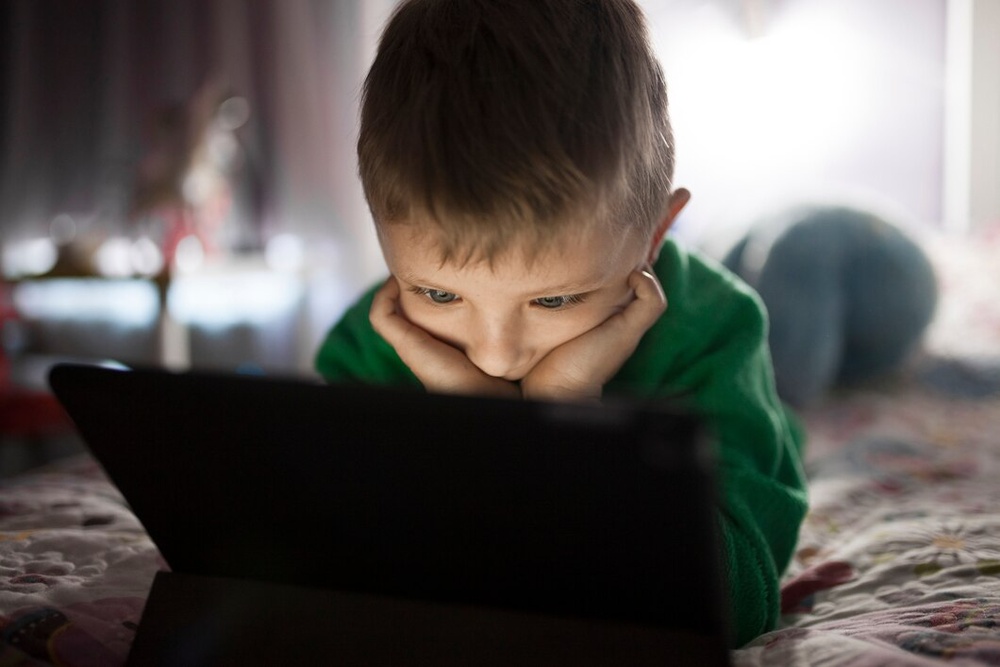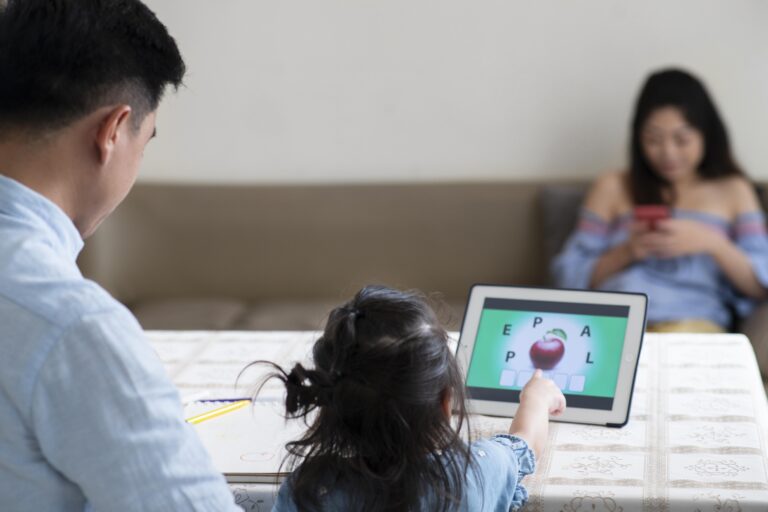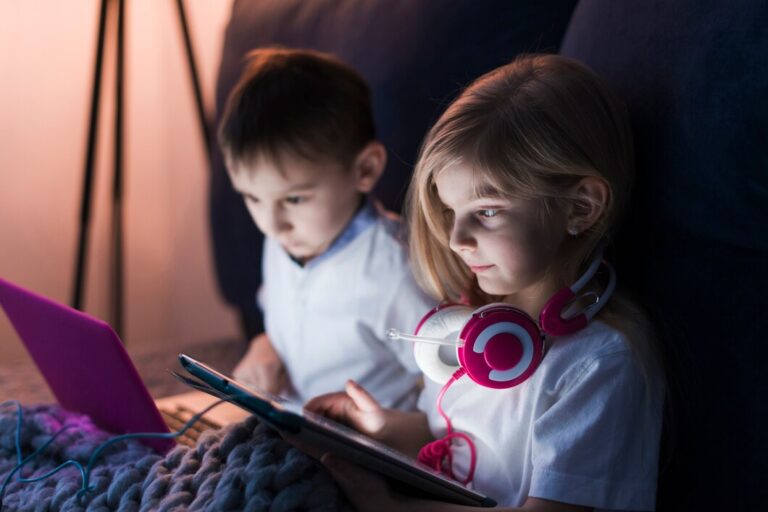
Screens – smartphones, tablets, computers, TVs – are an increasingly pervasive part of children’s lives. While technology can offer educational benefits and entertainment, excessive screen time can have significant negative impacts on a child’s developing brain, body, and overall well-being. Understanding these risks is crucial for parents and caregivers who want to foster healthy development and create a balanced environment for their children. This blog post will explore the multifaceted impact of screen time on various aspects of child development – cognitive, social, emotional, and physical – and provide practical guidelines for setting healthy limits and promoting positive technology use. Are you ready to navigate the digital landscape with your child’s well-being in mind?

The Developing Brain: Why Screen Time Matters So Much
Children’s brains are rapidly developing, particularly in the early years. This period is crucial for laying the foundation for cognitive, social, and emotional skills. Excessive screen time can interfere with this critical development in several ways.
Impact on Cognitive Development
- Attention Span: Constant stimulation from screens can shorten attention spans and make it harder for children to focus on tasks that require sustained effort, such as reading or schoolwork.
- Language Development: For young children, face-to-face interaction is crucial for language development. Excessive screen time can reduce opportunities for these interactions, potentially delaying language acquisition.
- Executive Function: Skills like planning, problem-solving, working memory, and self-regulation (collectively known as executive function) can be negatively impacted by excessive screen time.
- Cognitive Flexibility: The ability to switch between different tasks and adapt to changing situations can be hindered by the rapid task-switching often involved in digital media use.
- Creativity: Overconsumption of digital media can potentially limit imaginative play.
- Academic Performance: Excessive recreational screen time can negatively influence academic performance.
Impact on Social and Emotional Development
- Social Skills: Spending too much time on screens can limit opportunities for children to develop crucial social skills, such as reading nonverbal cues, understanding social dynamics, and resolving conflicts.
- Emotional Regulation: Excessive screen time can interfere with the development of emotional regulation skills, making it harder for children to manage their emotions effectively.
- Empathy: Some research suggests that excessive screen time can reduce empathy, as children have fewer opportunities to interact with others face-to-face and understand their emotions.
- Social Isolation: While digital media can connect children with others, excessive use can also lead to social isolation and a feeling of disconnection from real-life relationships.
- Increased Risk of Anxiety and Depression: Studies have linked excessive screen time to increased rates of anxiety and depression in children and adolescents.
Impact on Physical Development
- Eye Strain and Vision Problems: Prolonged screen time can lead to eye strain, headaches, blurred vision, and potentially long-term vision problems.
- Sleep Disruption: The blue light emitted from screens interferes with melatonin production, making it harder for children to fall asleep and stay asleep. Poor sleep has numerous negative consequences for physical and mental health.
- Sedentary Lifestyle: Excessive screen time often replaces physical activity, contributing to obesity, poor cardiovascular health, and other health problems.
- Posture Problems: Poor posture while using devices can lead to neck pain, back pain, and other musculoskeletal issues.
- Fine Motor Skills: Overreliance on touch screens may impede the development of fine motor skills.
Screen Time Recommendations by Age: Setting Healthy Limits
The American Academy of Pediatrics (AAP) provides the following screen time recommendations:
- Under 18 months: Avoid screen use, other than video chatting.
- 18-24 months: Introduce high-quality programming with a caregiver present. Avoid solo media use.
- 2-5 years: Limit screen use to 1 hour per day of high-quality programming. Co-viewing is recommended.
- 6 years and older: Place consistent limits on screen time and the types of media used. Ensure screen time doesn’t interfere with sleep, physical activity, and other healthy behaviors.
Note: These are general guidelines. It’s important to consider your child’s individual needs and development when setting limits.
Practical Strategies for Managing Screen Time: Creating a Balanced Approach
Here are practical strategies for managing your child’s screen time and promoting healthy technology habits:
1. Create a Family Media Plan
Develop a family media plan that outlines rules and guidelines for screen use for all family members. This plan should address:
- Time Limits: How much time each child can spend on screens per day or week.
- Content Restrictions: What types of content are appropriate for each child.
- Tech-Free Zones: Designate specific areas of the home (e.g., bedrooms, dining table) as tech-free zones.
- Tech-Free Times: Establish specific times of day (e.g., mealtimes, bedtime) when devices are not allowed.
2. Be a Role Model
Children learn by observing their parents. Model healthy technology habits yourself. Limit your own screen time, especially when you’re with your children.
3. Prioritize Face-to-Face Interaction
Make time for face-to-face interaction with your child every day. Put away your phone, engage in conversations, play games, and read together.
4. Encourage Outdoor Play and Physical Activity
Make sure your child has plenty of opportunities for outdoor play and physical activity. This is crucial for their physical and mental development.
5. Promote Tech-Free Hobbies
Encourage your child to pursue hobbies that don’t involve screens, such as sports, music, art, reading, or spending time in nature.
6. Co-View and Co-Play
When your child is using screens, co-view or co-play with them whenever possible. This allows you to monitor the content they’re consuming, engage in conversations about it, and teach them critical thinking skills.
7. Teach Digital Citizenship
Teach your child about online safety, responsible online behavior, and the importance of respecting others online.
8. Have Open Conversations
Talk to your child about the impact of screen time on their development and well-being. Encourage them to share their thoughts and feelings about technology use.
Use Parental Controls
Use technology to limit usage.
Conclusion: Finding Balance in a Digital World
Managing screen time in the digital age is a challenge, but it’s a crucial one for parents. By understanding the impact of screens on children’s development and implementing practical strategies to promote healthy habits, we can help our children thrive in a world that is increasingly reliant on technology. It’s about finding a balance – allowing children to benefit from the positive aspects of technology while protecting them from the potential harms.
Call to Action: Review your family’s current screen time habits and identify areas for improvement. Implement one strategy from this post this week. Share your experiences and any tips you discover in the comments below!
Frequently Asked Questions (FAQs)
Q1: What are some examples of “high-quality” programming for young children?
A1: Look for programs that are educational, age-appropriate, interactive, and promote positive social messages. Examples include PBS Kids, Sesame Workshop, and Common Sense Media’s recommended lists.
Q2: How can I tell if my child is spending too much time on screens?
A2: Signs include: neglecting responsibilities, withdrawing from social activities, becoming irritable when unable to use devices, lying about screen time, and experiencing physical symptoms like eye strain or headaches.
Q3: How can I enforce screen time limits without constant battles?
A3: Involve your child in setting the rules, be consistent, offer alternative activities, and use parental control tools.
Q4: My child uses screens for schoolwork. How does that fit into screen time limits?
A4: Educational screen time can be separated from recreational screen time.
Q5: How do I know what content is appropriate for my children?
A5: Use reputable review sites, and co-view whenever possible.






